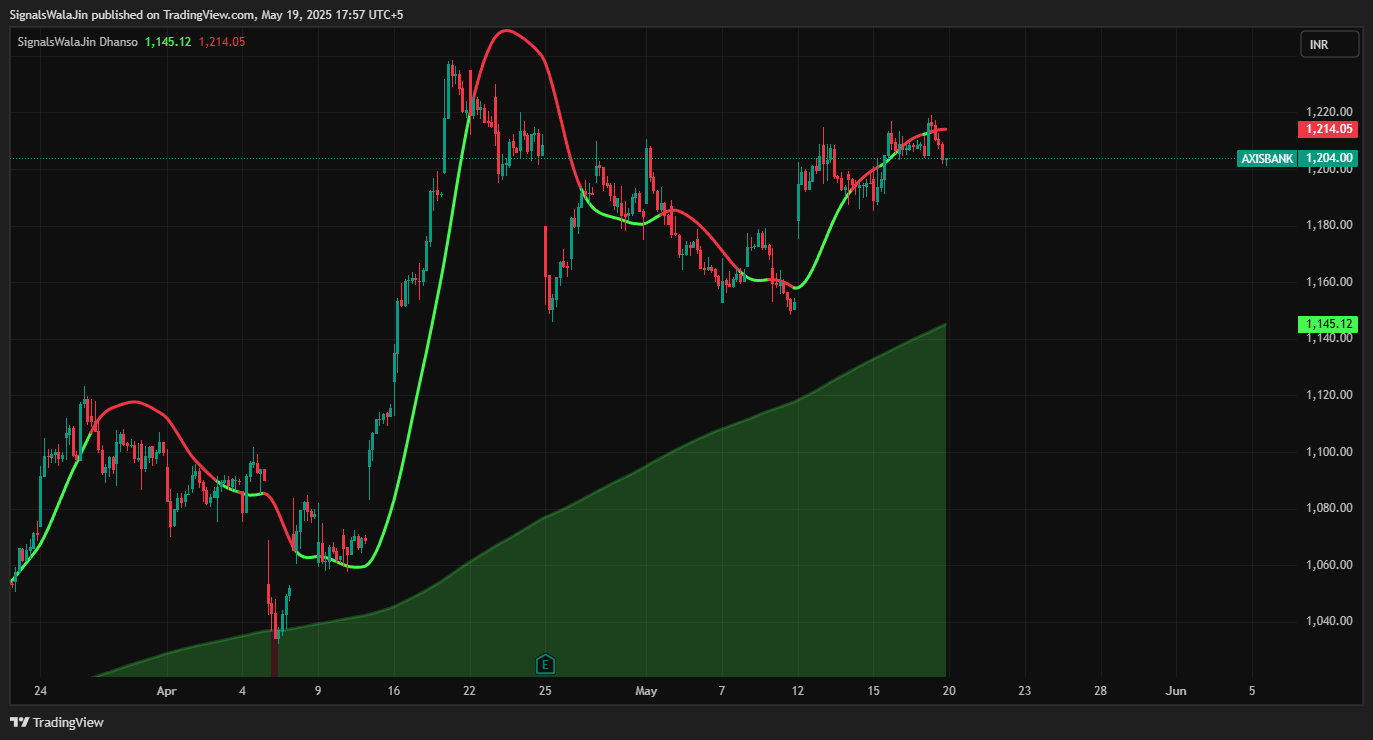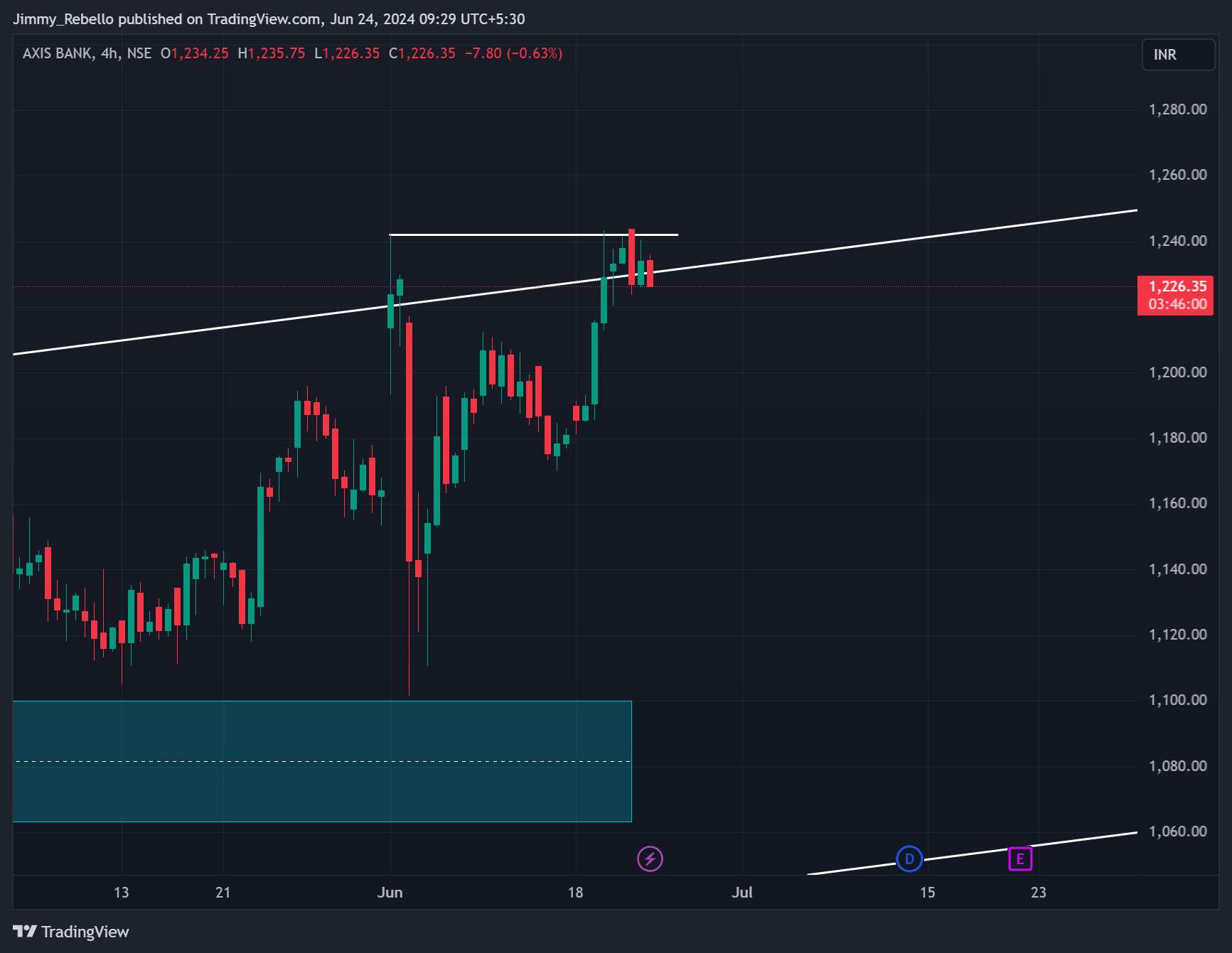
AXIS BANK GDR EACH REPR 5 INR10 'REGS'
67.8USDD
−0.6−0.88%
As of today at 14:16 GMT
USD
No trades
AXIS BANK GDR EACH REPR 5 INR10 'REGS' forum

bears bank at AXISBANK

AXISBANK Moving towards 963.50

AXISBANK if opens gap down view will be bullish
AXISBANK
Support Level: This is a price level where a stock tends to find buying interest, causing it to reverse direction or consolidate. It's the "floor" of the stock's price.
Resistance Level: This is a price level where selling interest tends to emerge, preventing the price from rising further. It's the "ceiling" of the stock's price.
Methods to Identify Support and Resistance:
Historical Price Action: Look at the past price chart of Axis Bank and identify areas where the stock has previously reversed or consolidated. These can act as potential support or resistance levels.
Round Numbers: Traders often watch psychological price levels like ₹1000, ₹1200, ₹1500, etc., as they tend to act as support or resistance.
Trendlines: Draw trendlines that connect lows (for support) or highs (for resistance). These can act as dynamic support or resistance levels.
Moving Averages: Simple Moving Averages (SMA) or Exponential Moving Averages (EMA) like the 50-day and 200-day moving averages can serve as support or resistance levels, especially when the stock is trending.
Fibonacci Retracement Levels: Fibonacci levels can help identify possible areas of support and resistance based on key percentages like 23.6%, 38.2%, 50%, 61.8%, and 78.6%.
Volume Analysis: High-volume areas near certain price points can signify strong support or resistance.
Support Level: This is a price level where a stock tends to find buying interest, causing it to reverse direction or consolidate. It's the "floor" of the stock's price.
Resistance Level: This is a price level where selling interest tends to emerge, preventing the price from rising further. It's the "ceiling" of the stock's price.
Methods to Identify Support and Resistance:
Historical Price Action: Look at the past price chart of Axis Bank and identify areas where the stock has previously reversed or consolidated. These can act as potential support or resistance levels.
Round Numbers: Traders often watch psychological price levels like ₹1000, ₹1200, ₹1500, etc., as they tend to act as support or resistance.
Trendlines: Draw trendlines that connect lows (for support) or highs (for resistance). These can act as dynamic support or resistance levels.
Moving Averages: Simple Moving Averages (SMA) or Exponential Moving Averages (EMA) like the 50-day and 200-day moving averages can serve as support or resistance levels, especially when the stock is trending.
Fibonacci Retracement Levels: Fibonacci levels can help identify possible areas of support and resistance based on key percentages like 23.6%, 38.2%, 50%, 61.8%, and 78.6%.
Volume Analysis: High-volume areas near certain price points can signify strong support or resistance.

AXISBANK It's looking good on chart,, i feel we are gonna to get all our targets positionally..

AXISBANK 1242.55 above this next bullish move nothing interesting below rejection from previous high point

AXISBANK Ishq hain toh risk hain?//

Cochin shipyard
AXISBANK triple top
